The scientific program of CRICS10 was developed upon seven transversal thematic axes that bring out evidence, initiatives and experiences that contribute to achieving the Sustainable Development Goals (SDG) of the 2030 Agenda and, especially, the Sustainable Development Agenda for the Americas (ASSA 2030).
A round table was organized for each of the thematic axis, with the participation of three to four lecturers, a coordinator and a rapporteur. The following article is a summary of the topics discussed in each round table, as well as their conclusions.
Open Science
The challenges faced by open science in the context of health were the topic of the round table held on Wednesday (5) morning. “In the current moment, data is central to discussions on research and health, and this includes the SDG”, stated Dr. Mauricio Lima Barreto, from the Center for Integration of Data and Knowledge in Health, from Fiocruz Bahia, Brazil. According to the researcher, monitoring the indicators for Objective 3 of the 2030 Agenda, which relates to the promotion of health, is essential to face the challenges that arise in new sceneries of risks and chronic diseases. “Suitable and timely responses have not yet been offered for the current health problems we are facing”, he alerts.
Barreto insists that a change of paradigm is taking place in relation to data, and this has modified research practices. “Understanding data is essential for comprehending social phenomena and problems”, he says. Furthermore, Barreto proposes a “human information system”, integrated by many layers of available information on individuals, in which life course data for each person could be analyzed in big data systems. “The development of these systems would allow an interconnection of professional and scientific practices”, he suggests.
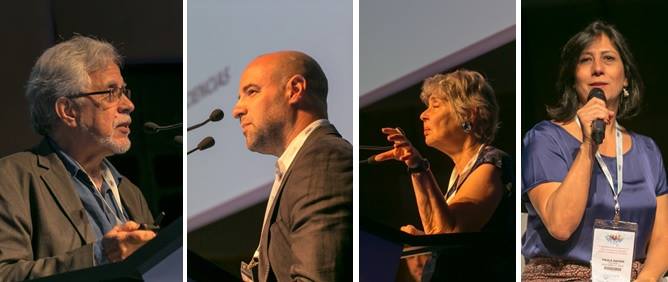 Juan Mariano Fressoli, from the Center of Research for Transformation (CENIT), Argentina, considers that scientific information is abundant, but institutions are still closed and unprepared to work in this new scenario. “If we do not overcome post-truth and participation islands, we will not be able to evolve towards the SDG”, he remarks. For Fressoli, open science must be understood beyond data, since it is also present in a variety of projects, such as projects integrating citizen participation, free software, and open peer evaluations. The researcher highlights the fact that currently, only four of the Region’s journals carry out open evaluation – three in Brazil and one in Argentina – which implies the need to reflect on this topic.
Juan Mariano Fressoli, from the Center of Research for Transformation (CENIT), Argentina, considers that scientific information is abundant, but institutions are still closed and unprepared to work in this new scenario. “If we do not overcome post-truth and participation islands, we will not be able to evolve towards the SDG”, he remarks. For Fressoli, open science must be understood beyond data, since it is also present in a variety of projects, such as projects integrating citizen participation, free software, and open peer evaluations. The researcher highlights the fact that currently, only four of the Region’s journals carry out open evaluation – three in Brazil and one in Argentina – which implies the need to reflect on this topic.
“We must transform our practices and ways of working, because we are thinking 21st century technologies, but out mentality is still of the 20th century. For Fressoli, there is no roadmap for open science that fits everyone; each country must define models that adjust to their context.
Which kind of data will be open, for whom and why? These questions were brought up by Claudia Bauzer Medeiros, from the Universidade Estadual de Campinas, Brazil, and member of the coordination of the Program eScience and Data Science of Fapesp. The researcher argues that curatorship is essential for data management. According to Medeiros, open science is more than documents, such as scientific articles – it happens at a metadata level, and these must be shareable. In addition to a good curatorship, Medeiros highlighted the importance of considering the context in which the data was collected and used. “The point of view defines the collection, use and sharing of data”, she says. And she alerts: “thinking of open knowledge implies personal and mental opening as well”.
The Open Science table was coordinated by Paula Xavier, from the Coordination of Information and Communication of Fiocruz Rio de Janeiro; “a regional and national articulation is essential for open science in health, considers Xavier, as the many of the challenges faced were being listed by the lecturers.
Information Management
Adriana Cybele Ferrari, Director of the Federação Brasileira de Associações de Bibliotecários (Febab), pointed out the importance of the topic in the Brazilian context, since 7.2% of the country’s population is illiterate and the national reading rate is low, of 4.96 books per inhabitant/year. According to Ferrari, libraries are related to SDG 16, which tenth goal is to secure public access to information. There are 320.000 public libraries in the world, and over a million parliamentary and university libraries, among other. In Brazil, Ferrari declares that there are “many developed initiatives in national libraries that help us in the sense of achieving the SDGs”, referring to the initiatives brought together in the Febab publication ‘Libraries for a better world – 2030 Agenda’.
On the scientific communication topic, Eloy Rodrigues, from the University of Minho, Portugal, argues that there is a domination from the part of editorial groups that exists from the moment of discovery until the moment of publication and that, for this reason, scientific communication is more and more closed. “It is necessary to reinforce and expand the role of repositories and of institutions and communities to which they are connected, in terms of managing research data”, he remarks. Rodrigues highlights the pertinence of the declaration published jointly by the Confederation of Open Access Repositories and Unesco in 2016, in favor of open access on the construction of local infrastructures that are sustainable and inclusive, as related to SDG 9. “Open and distributed systems, such as the Internet, are more flexible and sustainable, as well as less inclined to fail”, declares Rodrigues.
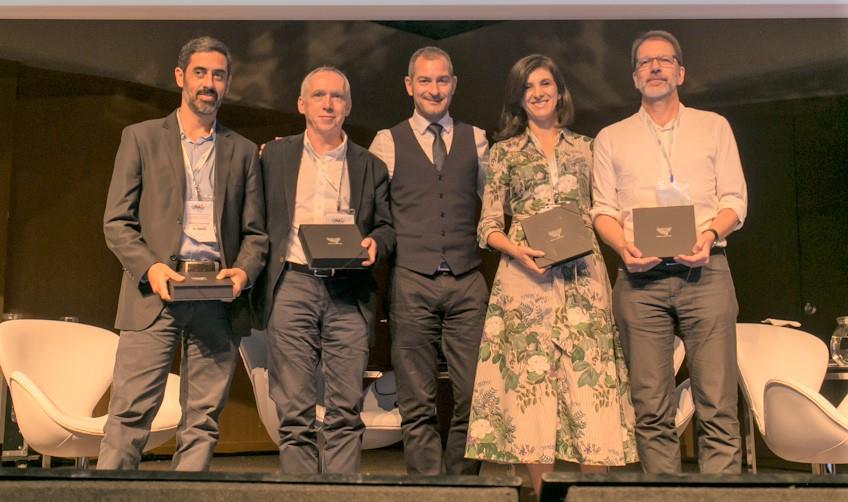 Rogério Mugaini, from the Escola de Comunicações e Artes of the Universidade de São Paulo, Brazil, delivered a presentation on the history and state of the art of academic metrics, among which are bibliometric indicators. According to the researcher, bibliometrics is strongly related to scientific policies, as well as to the way of doing science. Mugnaini pointed out the differences between passive and active searches for scientific information. The first is related to information collected by researchers at scientific events, in associations or virtual networks, creating a “nucleus zone” of information in a specific area. Active searching, on the other hand, is fruit of an effort to attain information of interest, and it creates a dispersion zone of information in scientific fields.
Rogério Mugaini, from the Escola de Comunicações e Artes of the Universidade de São Paulo, Brazil, delivered a presentation on the history and state of the art of academic metrics, among which are bibliometric indicators. According to the researcher, bibliometrics is strongly related to scientific policies, as well as to the way of doing science. Mugnaini pointed out the differences between passive and active searches for scientific information. The first is related to information collected by researchers at scientific events, in associations or virtual networks, creating a “nucleus zone” of information in a specific area. Active searching, on the other hand, is fruit of an effort to attain information of interest, and it creates a dispersion zone of information in scientific fields.
Tomas Allen, from the Library & Information Networks for Knowledge, of the World Health Organization (WHO), also presented a lecture during the table, about the Organization’s programs for promoting access to scientific output for low income countries. Allen emphasized the importance of systematic reviews for disseminating scientific evidence and generating guideline that can reach people in general, such as patients and health professionals.
The table was moderated by Ian Roberts, also from the WHO Library & Information Networks for Knowledge, and Ileana R. Alfonso Sánchez, from the Centro Nacional de Información de Ciencias Medicas (Infomed), Cuba, was the rapporteur.
Knowledge Management
We currently live in the midst of an information revolution. But how can we use this technology for education and training of health professionals? For Erica Frank, from the University of British Columbia, Canada, quality education is present in many SDGs, including SDG 3, related to health. “More highly qualified health professionals support the decrease of diseases”, she states. The researcher also recalls that education is essential for attaining SDG 16, related to peace, inclusion and justice; and SDG 17, which heightens global cooperation for sustainable development and for human resources capacity building.
Frank presented successful cases from NextGenU.org, a platform that promotes access to online courses on a variety of health topics and in many different languages. The initiative brings together participants from all continents and collaborators such as the Centers for Disease Control and Prevention (CDC) of the United States, the World Health Organization (WHO), the North Atlantic Treaty Organization (NATO), the American College of Preventive Medicine (ACPM) and the World Bank. According to the researcher, peer review is one of the crucial aspects of the courses, and obtained data reveals that training promotes an improvement in professional performance, verified by patients as well.
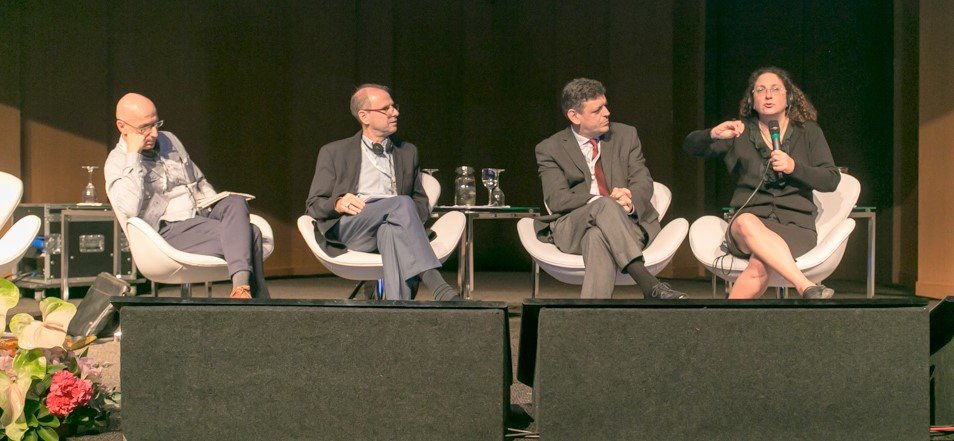 Technology has been used to bring quality education to an increasing number of people and is increasingly present in professionals’ life. For Roberto Pacheco, from the Universidade Federal de Santa Catarina, Brazil, in the era of information revolution, digital literacy is essential for developing professional competences in health. “Professions might not end, but professionals from some fields may not resist if they do not adapt to digital literacy”, he alerts. According to the investigator, digital literacy is not a closed concept, but a multidimensional and lifelong challenge – even if the process differs from the so-called digital natives to the “newly literate”.
Technology has been used to bring quality education to an increasing number of people and is increasingly present in professionals’ life. For Roberto Pacheco, from the Universidade Federal de Santa Catarina, Brazil, in the era of information revolution, digital literacy is essential for developing professional competences in health. “Professions might not end, but professionals from some fields may not resist if they do not adapt to digital literacy”, he alerts. According to the investigator, digital literacy is not a closed concept, but a multidimensional and lifelong challenge – even if the process differs from the so-called digital natives to the “newly literate”.
Fabio Tarasow, Coordinator of the Proyecto Educación y Nuevas Tecnologías from Flacso, Argentina, was the third lecturer of the table. He spoke about the future of education in the context of virtuality. “Virtual environments allow for the generation of high quality proposals in training”, he asserted. According to the researcher, there is an exponential growth of applications and educational platforms – but if some of them are in fact innovative, a large amount simply replicate the “virus” of an outdated education, where students must only listen and repeat, and where information is not transformed into knowledge.
“Knowledge is a personal construction. Information in itself does not generate change out of a certain context”, he argues. For Tarasow, the strength of technology is exactly the possibility of giving form to different types of action and interaction that go beyond traditional learning models. “The future of virtual environments is not technology, but the sense given to the use of technology”, he concludes.
This table had Eliane Pereira dos Santos, Regional Advisor in Knowledge Management and Networks, PAHO/WHO Headquarters, as rapporteur, and Gabriel Listovsky, from the Virtual Campus in Public Health of PAHO/WHO Panama as coordinator. The latter briefly contextualized the presentations and pointed out the challenges faced by knowledge transfer and the impact of this knowledge for perfecting human resources in health, since these are fundamental for the SDG and for universal health coverage.
Innovation and Digital health
According to Alain Labrique, from John Hopkins University, USA, applications for exchanging messages and other services developed with specific functions are powerful tools for enlarging access to health information. The award-winning researcher presented a variety of applications in eHealth that are being used in different regions of the world in order to reduce inequities in health. In South Africa, mobile applications for smartphones are being used to monitor pregnant women. Other examples include applications that remind patients with chronic diseases when to take their medicine, allowing a monitoring of adhesion to treatment; systems for training health workers in remote places; and programs that optimize the distribution of vaccines. “We must think of digital health as a way to spread what do already works”, he emphasizes.
Lyda Elena Osorio Amaya, from the Escuela de Salud Pública of the Universidad del Valle, Colombia, presented the project “Dengue Calculator”, developed by a multidisciplinary team. According to the researcher, it is an easy-to-use application for the diagnosis of the disease (in order to differentiate it from other diseases with similar symptoms, such as yellow fever, Zika and Chikungunya) that has a broad access, based on clinical algorithms. “The development of mobile applications is a window of opportunity for digital health”, she asserts. Amaya also points out the importance of joint work between public and private sectors, including the academy, industry, financers and health services for developing products in the field.
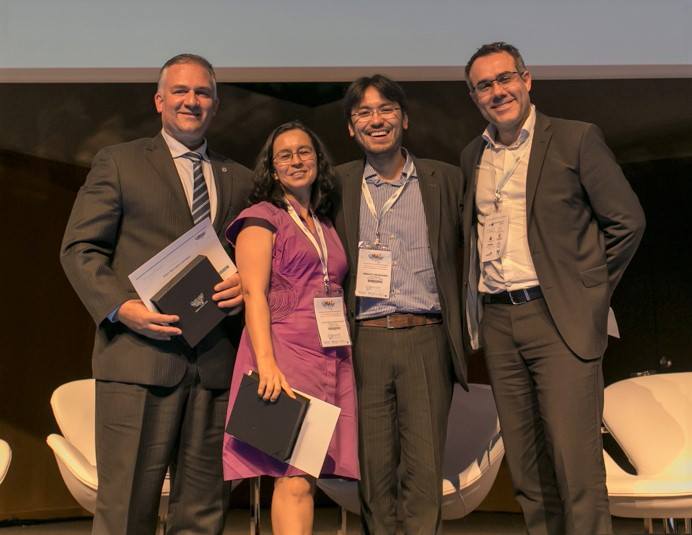 Technology also plays an important role in the processes of learning and developing capacities during the training of future health professionals. According to Welbert de Oliveira Pereira, from the Center of Technological Innovation of the Hospital Israelita Albert Einstein, in Brazil, the youth that enter university currently are digital natives and technology is already incorporated to their routine. Pereira recalls that the institution invests in new information and communication technologies (ICT) for the training process of the institution’s medical students. “When I use technology in class to teach, I lose less time with things that can be done by a machine, and I have more time with my students”.
Technology also plays an important role in the processes of learning and developing capacities during the training of future health professionals. According to Welbert de Oliveira Pereira, from the Center of Technological Innovation of the Hospital Israelita Albert Einstein, in Brazil, the youth that enter university currently are digital natives and technology is already incorporated to their routine. Pereira recalls that the institution invests in new information and communication technologies (ICT) for the training process of the institution’s medical students. “When I use technology in class to teach, I lose less time with things that can be done by a machine, and I have more time with my students”.
Pereira points out that in the daily routine of most students, many processes are mediated by ICT, including a few related to the development of non-cognitive abilities, such as self-evaluation, teacher evaluations and peer evaluation. “Technology must be a tool, not an end in itself. It must be used only when it provokes a real impact in learning”, emphasizes Pereira.
Verônica Abdala, Manager of Services and Information Sources of BIREME, was the rapporteur of the Table, and Renato Murasaki, Manager of Information Methodologies and Technologies of BIREME, was the coordinator. The latter highlighted that “keeping individuals at the center and considering the context of ICT is important for reducing inequities in health”.
Intersectoral
The topic “movement” describes well the conferences and discussions that took place during the table on intersectoral, held during the morning of the second and last day of the Congress. Diego González, Director of BIREME, opened the presentations, reporting intersectoral experiences in health in Latin America and the Caribbean. Among these were two successful cases in Argentina – the regulation for mandatory labeling of trans fats in food products and the program for reducing the consumption of salt in the country. “If all sectors work together in an aligned and synergic manner, we can attain great success”, he declared.
According to Dr. González, one of the main challenges is the documentation of experiences through the registering of qualitative and quantitative evidence. “Networks may increase the exchange of good practices and, consequently, the impact of the measures taken”, he said. The Director of BIREME proposes that the institution maintain a central role in the articulation of these networks, creating platforms for the documentation of successful intersectoral practices in health, thus increasing their visibility.
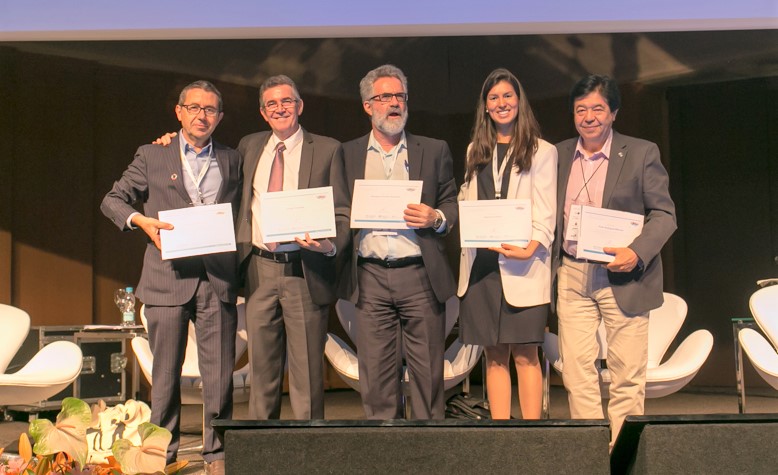 Ricardo Pérez Martínez, from the Division of Publications and Web Services of the Cepal (Economic Commission for Latin America), in Chile, recalls that the 2030 Agenda is complex and broad – and advancing in its 169 goals and 231 indicators “requires public policies that extrapolate sectors and institutions”, asserts the specialist. The Commission will launch soon the third report on the advances of the SDG for the Region. The document exhibits the cartography of national structures and mechanisms of coordination for the implementations of the 2030 Agenda in Latin America and the Caribbean, based on voluntary national reports from 21 of the 33 countries. “We have verified that the plan is being used as an instrument for implementing the 2030 Agenda”, he states. According to Martínez, SDG 7, 8, 11, 14 and 16 appear frequently in the national plans for long-term development.
Ricardo Pérez Martínez, from the Division of Publications and Web Services of the Cepal (Economic Commission for Latin America), in Chile, recalls that the 2030 Agenda is complex and broad – and advancing in its 169 goals and 231 indicators “requires public policies that extrapolate sectors and institutions”, asserts the specialist. The Commission will launch soon the third report on the advances of the SDG for the Region. The document exhibits the cartography of national structures and mechanisms of coordination for the implementations of the 2030 Agenda in Latin America and the Caribbean, based on voluntary national reports from 21 of the 33 countries. “We have verified that the plan is being used as an instrument for implementing the 2030 Agenda”, he states. According to Martínez, SDG 7, 8, 11, 14 and 16 appear frequently in the national plans for long-term development.
The importance of intersectoral planning to increase youth employability was the topic of the lecture given by Alejandra Saenz, sub-secretary of Institutional Issues of the International Youth Organization for Iberoamerica, in Spain. Currently, the world has the largest young population in history – 50% of the global population is made up of people under the age of 35, and 90% of this youth lives in developing countries. In 2025, young people will compose 75% of the global work force. “We must speak of youths in the plural form, since the national realities in which they are inserted are so different from one country to another”, she emphasizes.
According to Saenz, there is a great difficulty in accessing the work market – 40% of unemployed people are young and the unemployment rate among this part of the population is three times larger than among adults. Furthermore, in many cases work conditions are precarious, much of the youth is in a situation of informal work, salaries are low, and transformations in retirement systems show an uncertain future. With the objective of creating a space of knowledge on the matter of work among the youth and monitoring SDG 8, the Iberoamerican Youth Pact 2030 established a work and entrepreneur observatory, integrating the academy, public and private sectors and other organisms. “The youth must be seen as an instrument for transformation” declares Saenz.
Finally, Victor Rodrigues Matsudo, from the Study Center of the Laboratory of Physical Ability of São Caetano do Sul, spoke about intersectoral for the promotion of physical activity among the population. Matsudo presented the project Agita São Paulo, which he has been leading for 22 years, gathering approximately 350 associated institutions in the fields of sports, education and health, as well as urban planning and transportation, among others.
Currently, 5.3 million deaths in the planet are related to a sedentary lifestyle – the second main global cause of death. Physical activity reduces chances of myocardial infarction, cancer, strokes, high pressure and cholesterol. According to Matsuda, a small amount of physical exercise practiced daily has many health benefits. “Every step counts”, he declares. The actions undertaken by Agita São Paulo in association with city councils have resulted in improvements in the rates of sedentary lifestyles and vascular accidents, for example, in the cities of São Caetano do Sul, Sorocaba and Ilhabela. The program was transformed into an international network, Agita Mundo, with the participation of 73 countries.
Scientific Research and Communication
Iveta Simera, from the Center for Tropical Medicine and Global health of the University of Oxford, UK, participated in the event virtually and presented the EQUATOR Network, a platform that unites and connects health research groups and functions as a virtual library for sharing good research practices. “The portal of the EQUATOR Network has had over 6 million hits in 10 years, which proves its utility and visibility”, states Simera. The platform also offers tools and guidelines for producing reports on different types of health studies.
Simera also presented the actions of the Global Health Network in supporting and facilitating research in regions where they are necessary, but studies are few or non-existent, especially in low income countries. According to the researcher, to achieve the SDG of the 2030 Agenda, it is primordial to change the way we think of research. “Improving health does not depend only on improving research in health, but on improving all research related to health”, she declared.
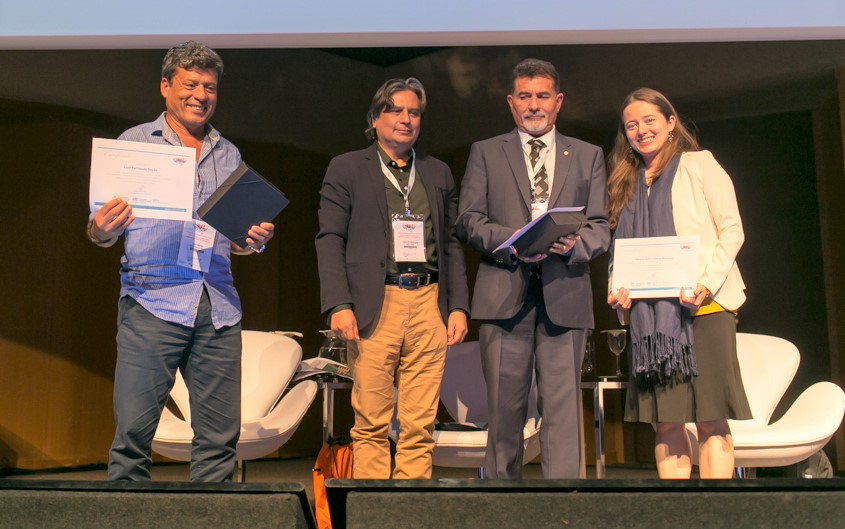 Rodolfo Peña, PAHO/WHO Communicable Disease Advisor in Honduras, spoke about research as a tool for creating public policies in health, within the framework of the 2030 Agenda. “When we speak of public policies, we must consider the contexts of each country and region”, said Peña, recalling that it is a complex and dynamic political process, which implies interests from different social actors. Peña listed examples of actions undertaken in countries of Central America, such as the case of actions against domestic violence that took place in Nicaragua. The country presents high rates of violence against women – 50% of Nicaraguan women have been mistreated at some point in their lives and 1 out of every 5 women has been a victim of violence in the last year. According to goal 5.2 of SDG 5, for the elimination of all forms of violence against women and girls, studies have been made and scientific articles have been published about the reality of the topic in the country. These investigations generated educational material, mobilization in the media and an open letter to the country’s representatives, which was signed by 50.000 women – all of which culminated in the passing of an integrated law against violence against women, in 2013. “Public policies need research that generate results and recommendations that can be put into practice”, he maintains.
Rodolfo Peña, PAHO/WHO Communicable Disease Advisor in Honduras, spoke about research as a tool for creating public policies in health, within the framework of the 2030 Agenda. “When we speak of public policies, we must consider the contexts of each country and region”, said Peña, recalling that it is a complex and dynamic political process, which implies interests from different social actors. Peña listed examples of actions undertaken in countries of Central America, such as the case of actions against domestic violence that took place in Nicaragua. The country presents high rates of violence against women – 50% of Nicaraguan women have been mistreated at some point in their lives and 1 out of every 5 women has been a victim of violence in the last year. According to goal 5.2 of SDG 5, for the elimination of all forms of violence against women and girls, studies have been made and scientific articles have been published about the reality of the topic in the country. These investigations generated educational material, mobilization in the media and an open letter to the country’s representatives, which was signed by 50.000 women – all of which culminated in the passing of an integrated law against violence against women, in 2013. “Public policies need research that generate results and recommendations that can be put into practice”, he maintains.
Methodologies and tools for the curatorship of scientific data were the topic of the presentation given by Luis Fernando Sayão, from the National Council for Nuclear Energy of Brazil. According to the expert, there is a visible science, which is published in the form of articles, theses and reports; and there is an invisible science, which corresponds to the entire research process, comprising the trajectory from the discovery to the generation of data, etc. Sayão estimates that 50% of discoveries are never published, and he asserts that giving visibility to this part of science is of great importance. “If this trajectory of hits and misses is revealed, new interpretations and reproducibility will be possible”, he declares.
In addition to technology, data management depends on policies, methodologies and patterns established by the scientific community, ideally through previous planning of the data management for the given research. Thus, according to Sayão, the reuse of collected information for new analysis becomes possible, assuring that investment on data is not lost. “The matter of provenance is very important for scientists to be able to work with data generated by other researchers”, he states.
Informed policies, strategies and decisions
Jorge Barreto, researcher on Health Systems from Fiocruz Brasília, was the first lecturer of the last round table held during the Congress. Barreto emphasized the need to reduce the gap between the large amount of available information – many millions registrations of scientific articles – and decision-making. “The question we must ask always is: How to make this knowledge usable?” he maintains.
“Often the agendas of the academy and of politics are not integrated – the academy may be looking in one direction, while politics needs another kind of evidence”, stated the researcher. According to Barreto, the main challenge for integrating evidence to the decision-making process resides in the use of scientific information, whose access is often difficult. “Information may be out of access for different reasons – the decision-maker may not have access to it, or not find it, or, even if found, he may not understand it or have a language barrier”. Subsequently, according to the researcher, it is essential for knowledge to be translated and for policies to be constructed jointly, from their beginning, by the academy, civil society and the government, in a dynamic and interactive process. “Knowledge may be global, but if it is not used locally, it has no value”, he remarks.
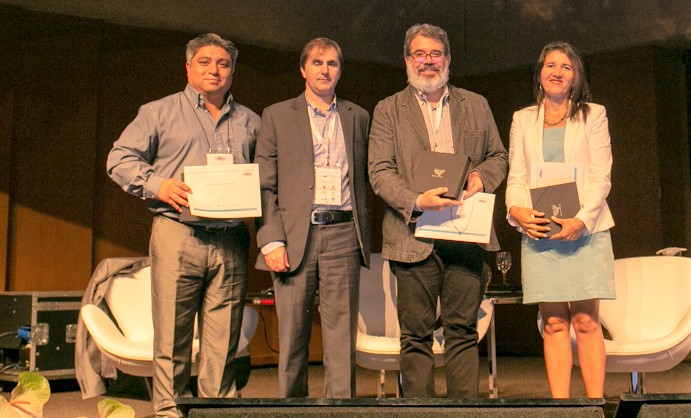 Islândia Maria Carvalho de Sousa, researcher form Fiocruz Pernambuco, defends qualitative research as an approximation to local reality. “It is precisely in qualitative studies that we find local dilemmas and the context of the problem”, she argues. The researcher exemplifies with her own field work with indigenous people from the Guarani Kaiowá ethnic group – they demonstrate tuberculosis rate that are five times higher than those of the population of African descent in Rio de Janeiro. According to Sousa, qualitative work showed evidence on habits related to health among the referred population that did not appear in epidemiological studies. The questions of the quantitative study followed a logic that was simply not understood by the studied group. “Researchers must dialogue with their objects of study, in order to have a better understanding”, she defends. In the same line of thought and extrapolating to the use of evidence in health policies, Sousa asks: “How many times do we consider the manager and his real need?”.
Islândia Maria Carvalho de Sousa, researcher form Fiocruz Pernambuco, defends qualitative research as an approximation to local reality. “It is precisely in qualitative studies that we find local dilemmas and the context of the problem”, she argues. The researcher exemplifies with her own field work with indigenous people from the Guarani Kaiowá ethnic group – they demonstrate tuberculosis rate that are five times higher than those of the population of African descent in Rio de Janeiro. According to Sousa, qualitative work showed evidence on habits related to health among the referred population that did not appear in epidemiological studies. The questions of the quantitative study followed a logic that was simply not understood by the studied group. “Researchers must dialogue with their objects of study, in order to have a better understanding”, she defends. In the same line of thought and extrapolating to the use of evidence in health policies, Sousa asks: “How many times do we consider the manager and his real need?”.
Luis Eugenio Ortiz Muñoz, from the Center of Evidence of the Pontificia Universidad Católica of Chile, presented a few platforms that facilitate access to scientific evidence in health, though the aggregation of different databases and the organization of the content by topics. The Epistemonikos platform, for example, is a tool for searching systematic revisions of health research from all databases in the world. The L-OVE platform organizes systematic revisions in health by the type of question – such as treatment, prevention, diagnosis, etc. Both are used by Muñoz’s team in a joint effort with the Chilean Ministry of Health for elaborating policies based on evidence. “The joint work of the teams aids the Ministry to attain its health goals”, he explains.
For the coordinator of the table, Ludovic Reveiz, from the Department of Evidence and Intelligence for Action in Health (EIH) of PAHO/WHO, questions and answers in health are complex, but technology has helped to integrate them.
The round tables developed upon the seven thematic axes of CRICS10 brought together 40 experts, including scholars, managers, decision-makers and employees of international organisms from nine countries, in two days of presentations and discussions, attended by over 550 participants. Definitely, the debate does not end with the closing of the Congress; the ideas and proposals that arose will continue to motivate new projects and collaborations, aiming to attain the Sustainable Development Goals of the 2030 Agenda in the Regions of the Americas.